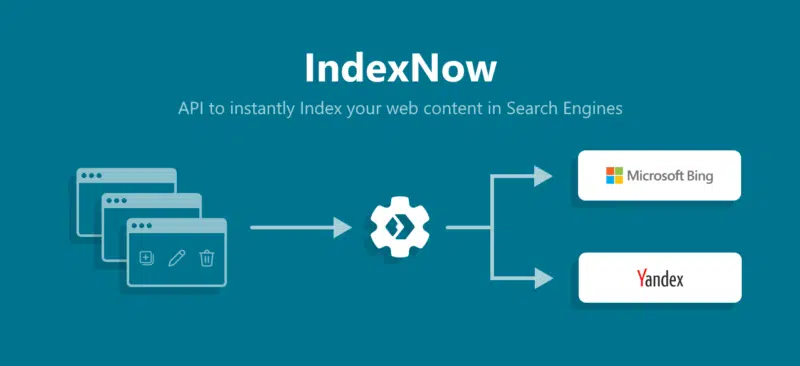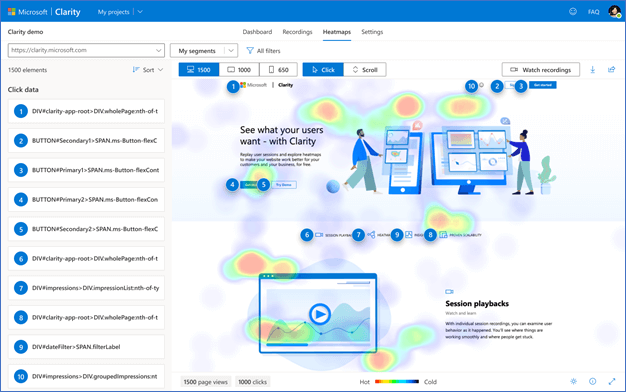Index when? IndexNow, say Bing and Yandex; Tuesday’s daily brief
Plus, industry insights for technical SEOs and the brands that hire them, courtesy of Aira and Women in Tech SEO.
Search Engine Land’s daily brief features daily insights, news, tips, and essential bits of wisdom for today’s search marketer. If you would like to read this before the rest of the internet does, sign up here to get it delivered to your inbox daily.
Good morning, Marketers, what do you think is the biggest risk to technical SEO success?
Over a quarter of respondents (27%) said that an organizational lack of resources (meaning that no one can get changes made) is the biggest deterrent, according to The State of Technical SEO Report (not gated content) from Aira and Women in Tech SEO. The report even includes commentary from 17 professionals: “Resource is the word on everybody’s lips right now. If you are an agency with resources to spare you’ll be hitting 2022 in a really great position,” said Paige Hobart, SEO team director at Roast. “More teams need to understand that when buying in[to] SEO, they also need to ensure that there’s other, supporting resources available (doesn’t need to be full time/fully dedicated),” said Natalie Arney, freelance SEO consultant.
I come across a lot of studies but few are this easy to digest, thanks to the intuitive UI, or this comprehensive, with sections specifically for in-house, agency and freelance SEOs, as well as tools, skillset and technical SEO efficacy. Whether you’re a practitioner yourself or running marketing for your business, there’s data and insights in the study that may help you make better decisions.
George Nguyen,
Editor
IndexNow – new initiative by Microsoft and Yandex to push content to search engines

Microsoft and Yandex have announced IndexNow, a new protocol that any search engine can participate in to enable site owners to have their pages and content instantly indexed by the search engine.
Currently, Microsoft Bing and Yandex are the two search engines fully participating in the initiative but others are welcome to adopt this open protocol. What’s more, any search engine that adopts this protocol must agree that submitted URLs will be automatically shared with all other participating search engines, eliminating the need to submit to both Bing and Yandex, or additional search engines if this becomes more widely adopted. Additionally, third-party sites, like eBay, LinkedIn, MSN and GitHub (the latter three being owned by Microsoft), have shown support for integrating the IndexNow API and Microsoft has even provided WordPress code it can use to integrate IndexNow into its CMS.
Why we care. When it comes to giving search engines the most updated content, instant indexing is an SEO’s dream. Google has been very strict about its applications indexing API, used for job postings and livestream content only now. So, while it seems Google may not participate in IndexNow in the near future, search engines like Microsoft Bing and Yandex are aiming to push this initiative hard.
The protocol is very simple and it requires very little developer effort to add this to your site, so it makes sense to implement this if you care about speedy indexing. It seems more and more search engines will participate but in terms of the big one, Google, that remains unclear.
Microsoft Advertisers can analyze post-click behavior, analyze engagement with new Clarity integration

Microsoft Clarity, the company’s free tool to help site owners better understand visitor behavior, will be integrated with Microsoft Advertising as a pilot program, the company announced Monday.
Why we care. Ads can help get potential customers to your site, but those customers aren’t guaranteed to convert — they may bounce because they couldn’t find what they were looking for or fail to move along their journey because of a broken button or link. Microsoft Clarity can help site owners analyze post-click user behavior via visual heatmaps (shown above) that illustrates user engagement, individual session replays and other metrics like clicks on non-existent links or the number of users that scrolled up and down a page in search of something they couldn’t easily locate. That information can then be used to better understand your path to conversion or identify and remedy potential roadblocks for customers.
It’s a roller coaster of Google — get in and buckle up
Life or death — the featured snippet vs. what’s on the actual page. We got all caught up with title changes last month, but there are other, dire ways in which search engines like Google can misrepresent our content.
MUM features from Search On spotted in the wild. Tip of the hat to Kenichi Suzuki for posting screenshots of Google’s “Refine this search,” “Broaden this search” and “Things to consider” (formerly “Things to know”) features in the wild. All of these features are built on other technologies but Google expects to improve them with MUM over the coming months — it could be starting already.
Let’s just get the memes out of the way right now. Last week, Google announced continuous scroll in the mobile search results. The Search Engine Land Meme Award™ (not official) goes to Aleyda Solis for her on-point Oprah reference and Sean Hecking for never giving up hope.
What We’re Reading: Instead of increasing its prices, Sherwin-Williams opts for a hidden 4% supply chain surcharge at checkout
Over the summer, Americans experienced the sharpest inflation rate in 13 years. Consumer prices rose by 5.4%, according to the Labor Department. To add to the frustration for consumers, some businesses may be implementing a surprise supply chain surcharge at checkout — Sherwin-Williams, the paint retailer, is one of those businesses.
“In Sherwin-Williams’ case, what they’re really doing is allowing themselves to advertise normal prices but jacking up customers’ cost by 4% at the cash register — after your paint’s been mixed and when most people probably won’t walk away from a purchase,” David Lazarus wrote for the Los Angeles Times.
As we approach the holiday shopping season, these hidden costs may be more common since advertising low prices can help retailers stay competitive. There’s a Catch-22 here, though: Promoting low prices that don’t match what customers see during checkout leads to distrust and a bad experience, but directly increasing prices may discourage sales. However, if your brand believes in transparency and respecting the customer, the choice seems obvious.
“The solution is simple: Pass a law requiring that consumer prices be all-encompassing,” Lazarus wrote, “In other words, require that the shelf price include all costs, including taxes and fees.” I’ve lived in countries where the final price is the advertised price and it simplifies so much of the purchasing experience — imagine never having to figure out if you’ll have to pay more in taxes because an online retailer operates in your state. I doubt this will come to fruition anytime soon, but if hidden fees persist, the movement may gain supporters.
Contributing authors are invited to create content for Search Engine Land and are chosen for their expertise and contribution to the search community. Our contributors work under the oversight of the editorial staff and contributions are checked for quality and relevance to our readers. The opinions they express are their own.
Related stories
New on Search Engine Land